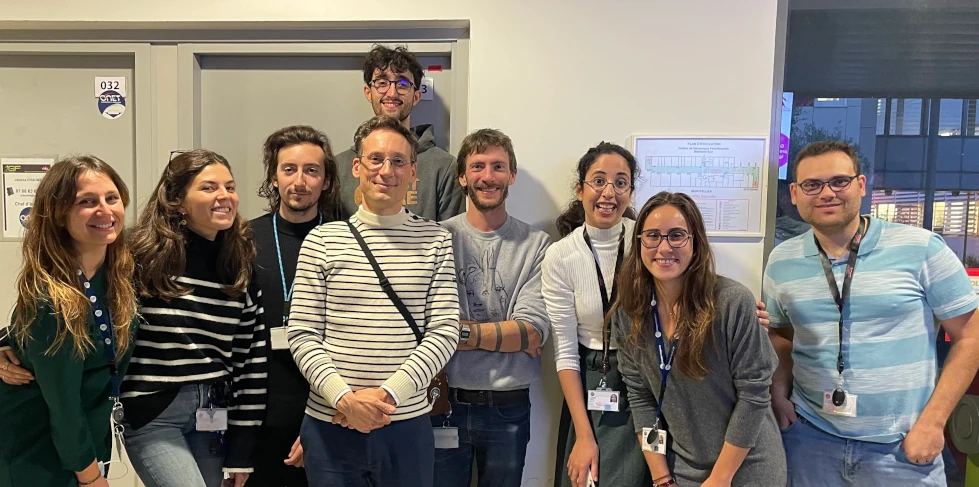Team Amaury FRANÇOIS
Neuronal networks for affective and social touch

The emotional dimension of tactile stimulation is a major component of our lives, yet the neural processes responsible for assigning positive or negative value to touch remain largely understudied. Our research team is seeking to better understand the mechanisms and neural networks involved in affective and social touch. We are also interested in pathologies that may be associated with poor integration of affective touch, such as autism spectrum disorders and depression and anxiety associated with chronic pain.
Tactile perception and discrimination have been expensively studied throughout the prism of whisker exploration in rodent. This work greatly improved our understanding of the discriminative aspect of touch and how the quality of a tactile stimuli can be associated with other sensory process to help creating a goal directed behaviour. In comparison little is known about the neuronal process of how the rest of the body integrates tactile information, in particular through the skin. Skin and whiskers are not the same organs and thus probably do not share the same physiological function. For example, the skin has been proposed to be a social organ, conveying much more than just discriminative information. This suggests that information coming from skin receptors is not integrated the same way in the central nervous system (CNS). Surprisingly, this process is largely understudied and the neuronal mechanisms and circuits responsible for attributing an emotional value to tactile stimuli are almost unknown.
The overall goal of our lab is to identify the neural networks engaged during affective and pleasurable touch and understand how somatosensory and reward pathways interact to create a goal directed behaviour. We are also interested in pathologies which can be associated with a mis integration of affective touch, such as autism spectrum disorders and depression and anxiety associated with chronic pain.
To reach our goals, the lab uses multiple approaches ranging from sophisticated mouse genetics, in vitro, ex vivo and in vivo calcium imaging and electrophysiology, to molecular biology and behavioral analysis based on machine learning.
This Team is supported by the Impulscience Program (Fondation Bettencourt Schueller) and the agence national de la recherche.


 IGF Sud 025
IGF Sud 025 04 34 35 93 17
04 34 35 93 17
 IGF Nord 018
IGF Nord 018 04 34 35 93 17
04 34 35 93 17
 IGF Nord 018
IGF Nord 018 04 34 35 92 17
04 34 35 92 17
 IGF Sud 025
IGF Sud 025 04 34 35 93 17
04 34 35 93 17
 IGF Nord 018
IGF Nord 018 04 34 35 93 17
04 34 35 93 17
 IGF Sud 025
IGF Sud 025 04 34 35 92 17
04 34 35 92 17
 IGF Sud 125
IGF Sud 125 04 34 35 92 48
04 34 35 92 48
 IGF Sud 025
IGF Sud 025 04 34 35 93 17
04 34 35 93 17
 IGF Nord 018
IGF Nord 018 04 34 35 93 17
04 34 35 93 17
 IGF Sud 125
IGF Sud 125 04 34 35 92 48
04 34 35 92 48
 IGF Sud 225
IGF Sud 225 04 34 35 93 19
04 34 35 93 19
 IGF Nord 018
IGF Nord 018 04 34 35 93 17
04 34 35 93 17
 IGF Nord 018
IGF Nord 018 04 34 35 93 17
04 34 35 93 17- François A, Schüetter N, Laffray S, Sanguesa J, Pizzoccaro A, Dubel S, Mantilleri A, Nargeot J, Noël J, Wood JN, Moqrich A, Pongs O, Bourinet E. The Low-Threshold Calcium Channel Cav3.2 Determines Low-Threshold Mechanoreceptor Function. Cell Rep. 2015 Jan 14. pii: S2211-1247(14)01095-X. PubMed PMID: 25600872.
- François A, Low SA, Sypek EI, Christensen AJ, Sotoudeh C, Beier KT, Delp SL, Malenka RC, Luo L, Sharif-Naeini R, Ramakrishnan C, Deisseroth K, Hantman AW, Scherrer G. GABAergic Neurons of Rostral Ventromedial Medulla Facilitate Pain via a Dorsal Horn Disynaptic Inhibitory Circuit. 2017 Feb 22;93(4):822-839.e6. PubMed PMID: 28162807.
- Huzard D, Martin M, Maingret F, Chemin J, Jeanneteau F, Méry PF, Fossat P, Bourinet E, François A. The impact of C-Tactile Low threshold mechanoreceptors on affective touch and social interactions in mice. Science Advances 2022. Jul;8(26):eabo7566; PubMed PMID: 35767616
- Live mouse tracker analysis toolbox
LWTools v1.0.9: 2023 (https://pypi.org/project/LWTools/)

Show Les invités du 16/19
Le chercheur montpellierain Amaury François et le toucher émotionnel
January 2023

Fondation Bettencourt Schueller
C fondamental – Amaury François : Comment arrive-t-on à communiquer à travers le toucher ?
September 2023

La revue de l’Institut Polytechnique de Paris
Du toucher à la relation sociale : la magie des neurones
October 2022


Replay Twitch
Douleur et plaisir, comment le cerveau les capte
May 2023




